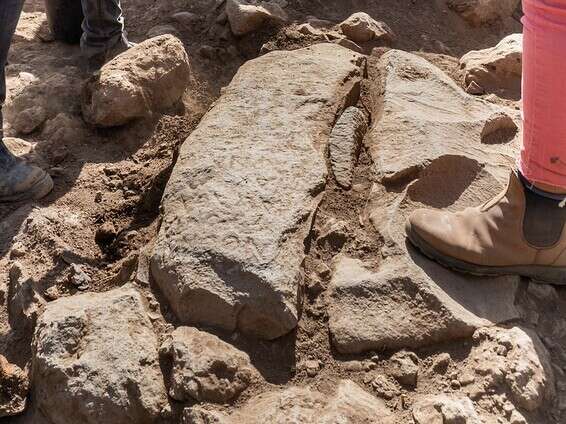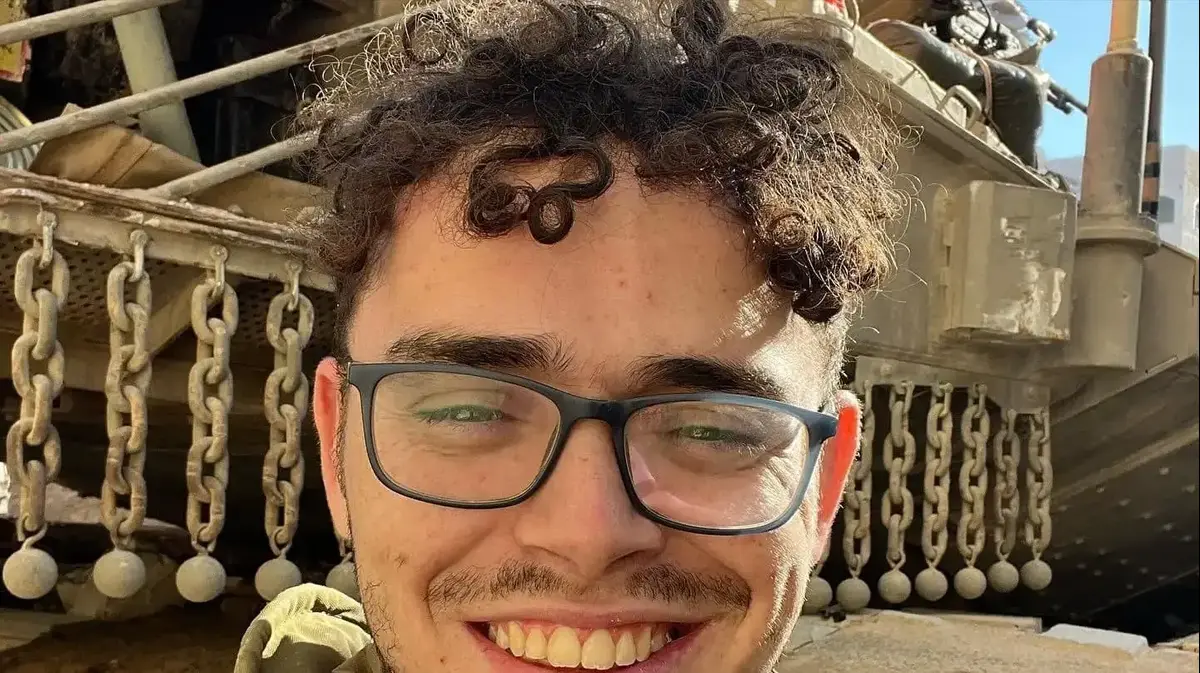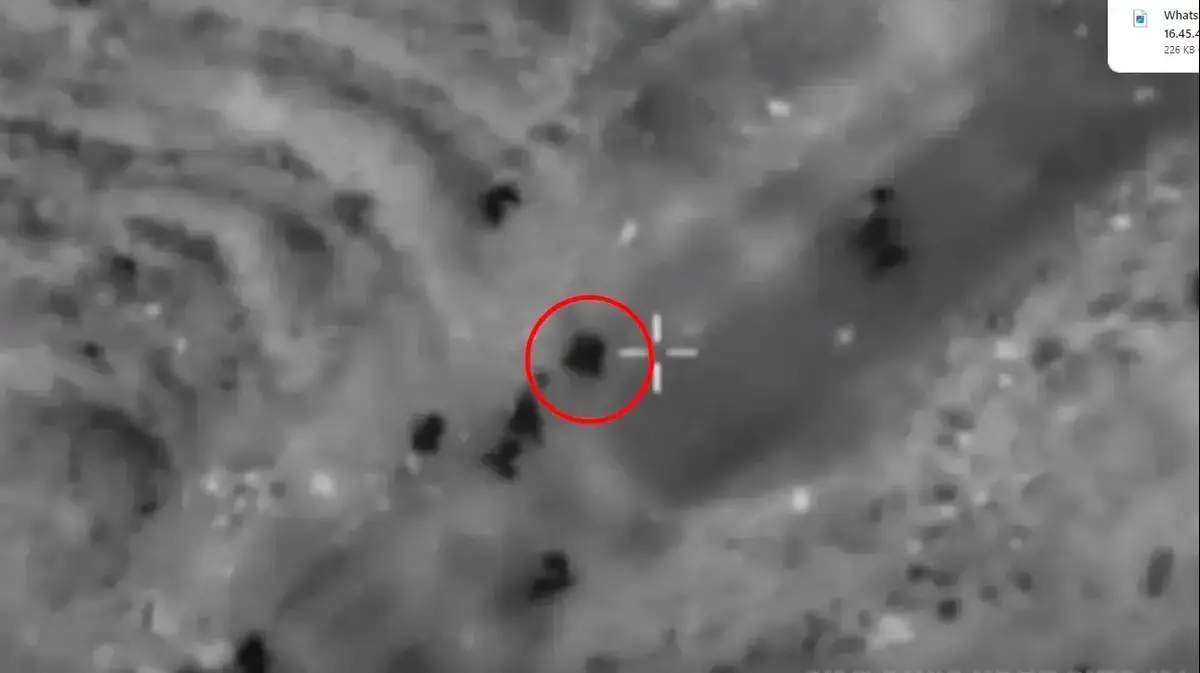A 1,700-year-old boundary stone, bearing the name "Kfar Nefah" in Greek, was uncovered in an archeological excavation by the Israel Antiquities Authority near the Nefah camp in the Golan Heights. • Archaeologists: "Exciting and amazing"
The excavation site in the volume area
Photography:
Assaf Peretz
The name "volume camp" has recently made headlines in the series "Lock Hour" here 11, but an archeological excavation conducted in the Golan Heights last month reveals for the first time that the name "volume" was given to the site 1,700 years ago.
The matter was discovered during an archeological excavation conducted by the Israel Antiquities Authority before the laying of a volume water pipeline at the initiative of Mekorot.
This is part of the projects that the company is carrying out for laying water lines in the Golan Heights, with a total length of 20 km.
The Kedmat Zvi volume water line will serve as the main water line in the water supply system for IDF bases in the Golan Heights and the city of Katzrin.
An excavation, conducted by Dina Avshalom Gorni and Yardena Alexander of the Israel Antiquities Authority, and with the participation of pre-military preparatory students from Ein Baruch and Kela-Alon and volunteers from the community, surprisingly revealed a stone with an inscription in Greek.
The stone was discovered in secondary use, as a cover stone for the tomb.
The decipherment of the inscription by Dr. Danny Sion of the Israel Antiquities Authority, together with Prof. Haim Ben-David of the Kinneret Academic College, aroused great excitement.
The researchers also noted: "The inscription, which mentions the name of Kfar Nefach, was engraved on a boundary stone.
These stones were placed in the days of the Roman emperor Diocletian (around 300 AD) within the boundaries of villages, for the purpose of collecting taxes.
This is the first boundary stone in the center of the Golan on which appears a name that has been preserved to this day;
Nafah was the name of the Syrian village that lived there until the Six Day War, and the name of the Nafah military camp, which still exists today. "
The researchers added that "usually, the ancient names are preserved as a result of a settlement sequence, which preserves the ancient names from generation to generation.
However, such a sequence did not exist in volume, and from the Byzantine period about 1,500 years until the modern period, no settlement is known at the site, except in the Mamluk period (13th-15th century AD).
For this reason, the preservation of the name is intriguing and astonishing.
Finding the boundary stone, on which a settlement has been preserved to this day, is a rare occurrence.
The stone reinforces the possibility that ancient names of settlements have been preserved for many generations, even when there was no settlement sequence. "
The directors of the excavation, Jordana Alexander and Dina Avshalom-Gorni of the Israel Antiquities Authority, emphasized that:
This is the first governmental public building from the Mamluk period, excavated in the Golan.
The station was built on the main road that connected the Galilee to Damascus, and it seems that it served as a parking and resting place for traders and government representatives who passed on this road.
Here they dined, renewed their travel gear and cared for the horses.
Remains of an iron kiln and slag were found in the courtyard of the building, which may indicate that an iron volume sat in the courtyard and renewed the horses' hooves and donkeys parked there. The stability of the water economy also for the future, we are happy about the opportunity we had to contribute to the preservation of the heritage of the past.The company is proud to be part of the important discovery revealed ".
Photos: Assaf Peretz, Israel Antiquities Authority












/cloudfront-eu-central-1.images.arcpublishing.com/prisa/KMEYMJKESBAZBE4MRBAM4TGHIQ.jpg)


